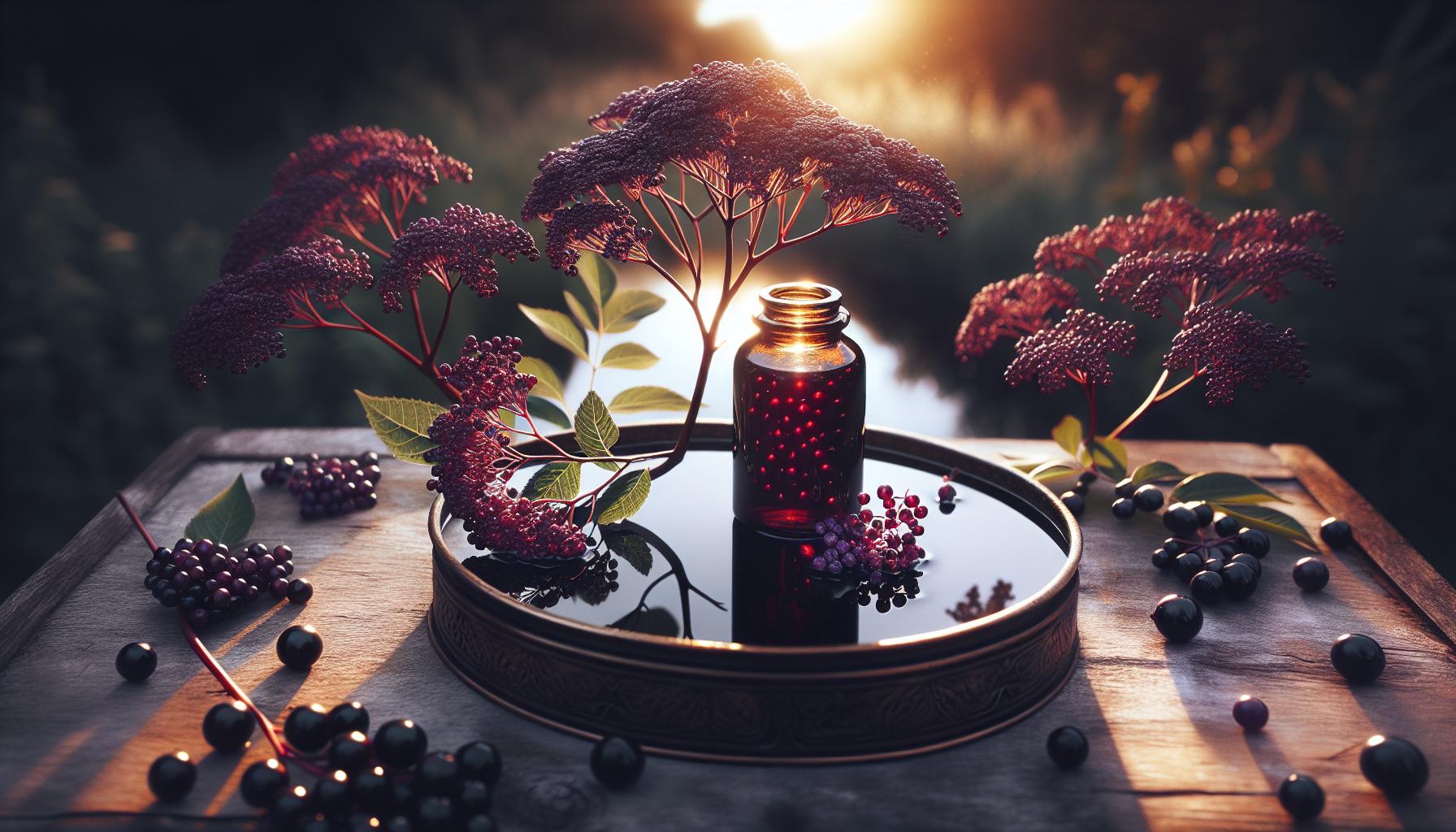Introduction to Elderberry Plants
Wondering ‘what do elderberry plants look like?’ Well, you’ve come to the right place! In simple terms, elderberry plants are medium to large shrubs that produce small clusters of white or pink flowers that grow into purplish-black berries. But that’s just skimming the surface, as this versatile plant has much more to offer and to discover.
In this comprehensive guide, we’ll delve deeper into the visual characteristics of elderberry plants, exploring everything from their defining features, unique blooms, to the marvel of their mature berries. Just as a sculptor carefully examines a block of marble before crafting a masterpiece, let’s meticulously study the exciting world of elderberry plants, blossoming with beauty, and brimming with botanical brilliance.
An Elderberry’s profile: Endearing and Enchanting
When you first lay your eyes on an elderberry plant, its character grabs your attention. Standing at an impressive 6 to 12 feet tall, this perennial shrub is practically an evergreen giant in the plant kingdom. Its stems, elegantly coated with rough, light brown bark, are often cavities of intense life — playing host to aphids, moths, and other intertwining ecosystems.
The Elderberry’s Leaves
But don’t get swayed away, as there’s more to an elderberry than meets the eye. Each stem bears compound leaves reminiscent of those found on an ash tree, hence the name “Common Elder.” Typically comprising of 5 to 9 leaflets, these dark green and slightly serrated beauties add a dash of charm to the plant’s stupendous stature.
The flowers: A Spectacle of Serenity
Come early summer, the elderberry makes a spectacular shift worthy of a standing ovation. Five to nine radiating stems spring forth from the plant’s attempt to reach for the skies, transforming into umbrellal clusters of tiny flowers. These creamy-white to pink blossoms form an enchanting canopy over the plant and emit a unique musky sweet aroma that attracts bees and butterflies alike.
The Elderberries: Small Jewels of Nature
By late summer, the alluring flowers develop into elderberries. These berries are small, round, and usually a deep purple or black when ripe. A true feast for the eyes, it’s no wonder these little jewels of nature are considered symbols of abundance and prosperity.
Exploring Elderberry Varieties
Like thumbprints, not all elderberries look alike. Varieties like ‘Black Lace’ flaunt near-black, finely cut foliage and soft pink blooms. On the opposite end of the spectrum, ‘Golden Tower’ sports golden, pillar-like growths and creamy-white flowers. This inherent diversity painting a captivating picture of nature’s creativity.
The Seasonal Elderberry Transformation
Just like an artist’s canvas, elderberry plants undergo a fascinating evolution through the seasons. Spring ushers in fresh green growth, morphing into white clusters of blushing blooms in summer. Come fall, the leaves take a spectacular gold turn as the plant readies itself for winter rest.
Conclusion: The Allure of Elderberry Plants
There you have it – a descriptive walk through the world of elderberry plants, these endearing shrubs that beguile with their charm and transformations. So, next time you’re on a nature walk, you’ll know exactly what to look out for when we say ‘Elderberry.’
Frequently Asked Questions
1. How tall does an elderberry plant grow?
Elderberry plants can reach heights between 6 and 12 feet. Some dwarf varieties can be significantly smaller while some more giant varieties can reach up to 20 feet.
2. What color are elderberries?
Elderberries when ripe, are usually a deep purple or black color. However, note that unripe elderberries are often a greenish-red color and are toxic if eaten.
3. When do elderberry plants bloom?
Elderberry plants typically bloom in early summer. However, the exact timing can depend on their geographical location and the specific weather conditions of the year.
4. Are all elderberries edible?
Though many kinds of elderberries are edible, not all are safe to eat. The ripe, black, or blue berries from Sambucus nigra and canadensis are safe when cooked.
5. How do I identify an elderberry plant in the wild?
Look out for shrubs standing 6 to 12 feet tall with dark green compound leaves. In summer, look for clusters of small white to pink flowers, and in late summer, watch for small, deep purple or black berries.


